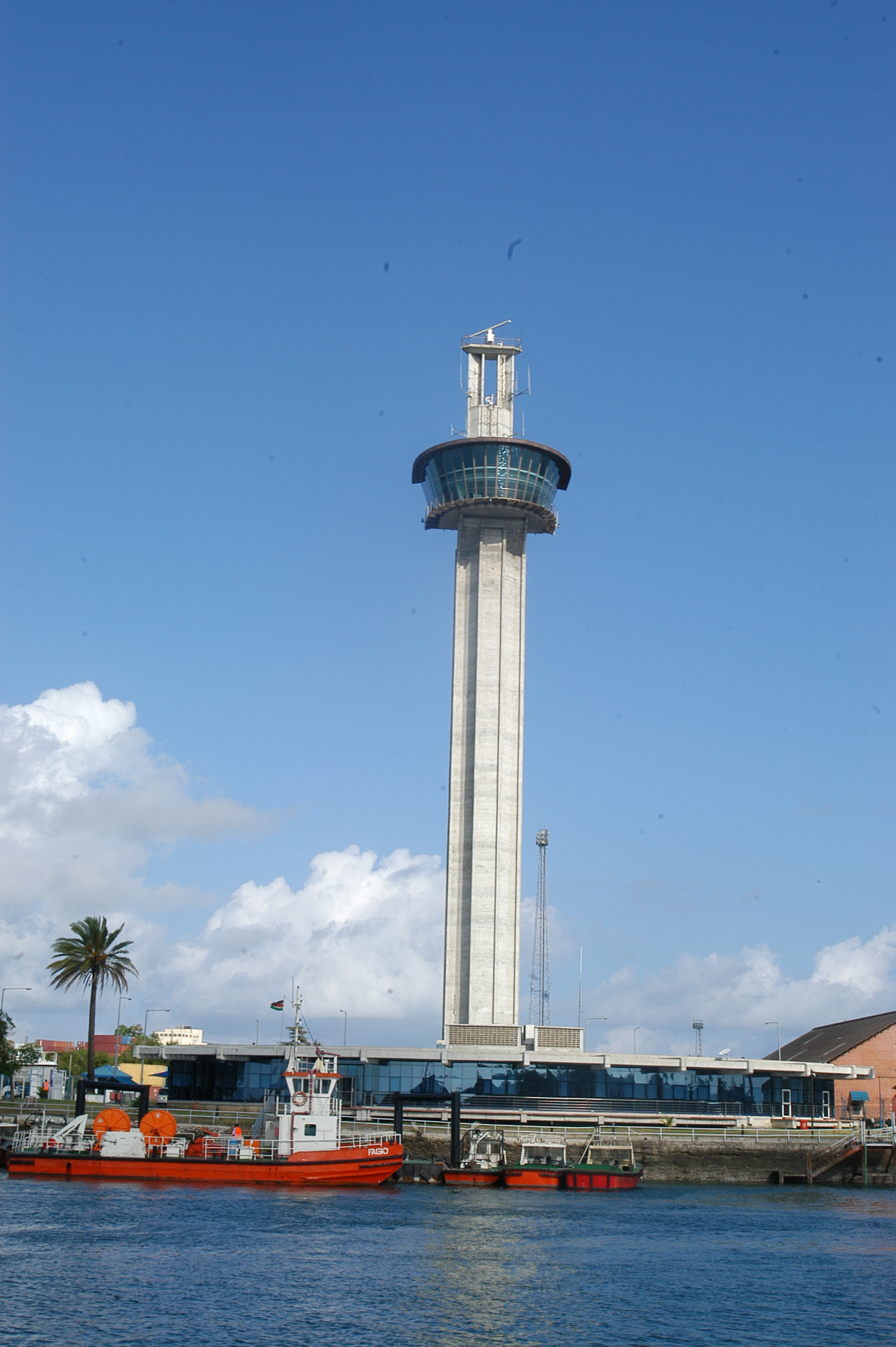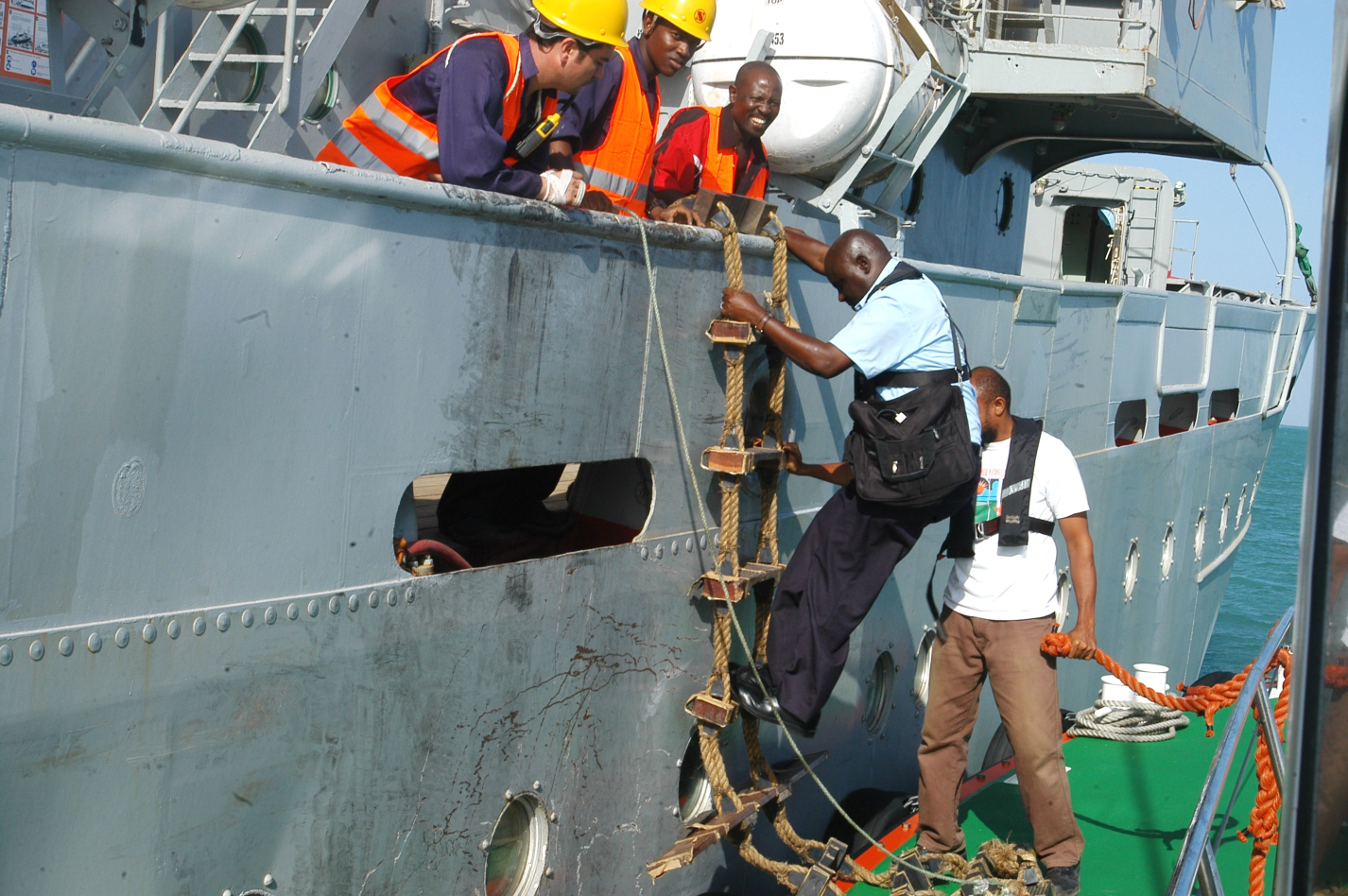NOTIFICATION OF ARRIVAL AND VHF REPORTING PROCEDURE FOR ARRIVAL AND DEPARTURE OF VESSELS.
Notification of Arrival
 The Owner, Agent , Master or Person In charge of every vessel of 300 GRT or more which intends to enter the Port of Mombasa shall notify the Harbour Master at least 24-hours before the arrival of such vessel by any of the following means.
The Owner, Agent , Master or Person In charge of every vessel of 300 GRT or more which intends to enter the Port of Mombasa shall notify the Harbour Master at least 24-hours before the arrival of such vessel by any of the following means.
a)Telex :+254 020-3575897 'DIR KPA KE'
b)Mobile :+254725374156 or +254725252068
c)Telefax :+254-41-2220424
d)Email :mvts@kpa.co.ke
e)VHF :Ch.12 or 16
f)Telephone : +254- 41-2312895/2113541/2113421
The Owner, Agent, Master or Person In charge of such a vessel coming from a nearby Port with less than 24 hours steaming time to Mombasa, shall immediately on departure from such port notify the Harbour Master by any one of the means of communication above.
Format – Notification of Arrival.
The Owner, Agent, Master, or Person in charge of the vessel shall provide the information in the following format:
i. Name of the Vessel
ii. Call Sign
iii. Nationality (Flag)
iv. Type of Vessel
v. Gross Registered Tonnage (GRT)
vi. Name of Local Shipping Agency (Agent)
vii. Date & Estimated Time of Arrival (ETA)
viii. Last Port of Call
ix. Next Port of Call
x. Draft of Vessel
xi. Air draft
The distance between the waterline and the highest point on the vessel or Height of the vessel which shall be vertical height measured from Water Line of the vessel to the highest point of the vessel including its Cargo, Structure or Equipment on board.
xii. Number of Crew on board
xiii. Number of Passengers on Board
xiv. Quantity of Dangerous Cargo on board, Class and UN Number.
xv. Security level at which the vessel is operating.
xvi. Remarks: (if any)
The following remarks when applicable shall always be reported
a) Condition affecting the Navigation of the vessel such as defective Propulsion Machinery, Steering Equipment, Thruster, Excessive List and awkward Tows.
b) Fire or Hazards on board including carriage of dangerous goods.
c) Damaged Vessels
d) Vessels damaged by Bombs and other ordnances.
1.4 Confirmation of Arrivals
The Master of every vessel of 300 GRT or more or every Tug engaged in Towing or Pushing if the combined GRT of the Tug and Tow or Vessel(s) being pushed is 300 GRT or more, any Passenger vessel intending to enter the Port of Mombasa shall report by VHF to the Ras Serani Control Station or Mombasa VTS Centre on Channel 12 or 16.
1.5 VHF Report for Departing Vessels
1.5.1 Prior to Departure
The Master of every Vessel as specified in Paragraph 1.4 intending to leave Mombasa shall inform the designated Control Centre prior to departure and shall give as specified below:
a) Name of Vessel
b) Call Sign
c) Present Location
d) Destination
e) Air Draft
f) Draft
g) Loaded Bunkers
h) Took Fresh Water
I ) Port Clearance
j) Remarks if any
In addition Masters or Agents shall prior departure give one hour's Notice to Ras Serani Signal Station on VHF Channel 12 or 16
Embarkation Requirements
(1) Provide a good lee for the pilot launch and maintain a speed of about 8 – 10 knots or so otherwise advised by the pilot vessel. (There are occasions when it becomes preferential to provide a lee from swell rather than wind and sea. Consult with Ras Serani Station if in doubt)

(2) The Pilot ladder must be constructed and rigged in accordance with IMO requirements (see Chapter V of SOLAS 1960 for pilot ladders.) The ladder should be clean, properly fitted with spreaders, well clear of all discharges and outlets, and all outboard fittings which might foul the pilot launch. The bottom of the ladder should be 2.0m above the water. The distance from the waterline to the point of access must not exceed 9.0m.
(3) Two clean manila manropes of not less than 28mm diameter and not more than 32mm diameter are to be securely made fast to the ship, and must not be made fast to the ladder at any point. The manropes must not be longer than the ladder.
(4) Where the ladder is rigged over a bulwark, two stanchions are to be securely fitted to the top of the bulwark, one on each side of the ladder, and steps are to be provided from the top of the ladder to the deck.
(5) By night a bright light is to shine downwards and forwards to clearly illuminate the ladder and the ship's side.
(6) Boat ropes are NOT to be used
(7) An officer should be in attendance at the ladder with lifesaving appliances ready for immediate use and a Portable radio for communication to the bridge.
(8) Retrieving lines should not be used, but if it is absolutely necessary to use a retrieving line, then it should be made fast to the extreme aft end of the lowest spreader step (5 steps from bottom of ladder).